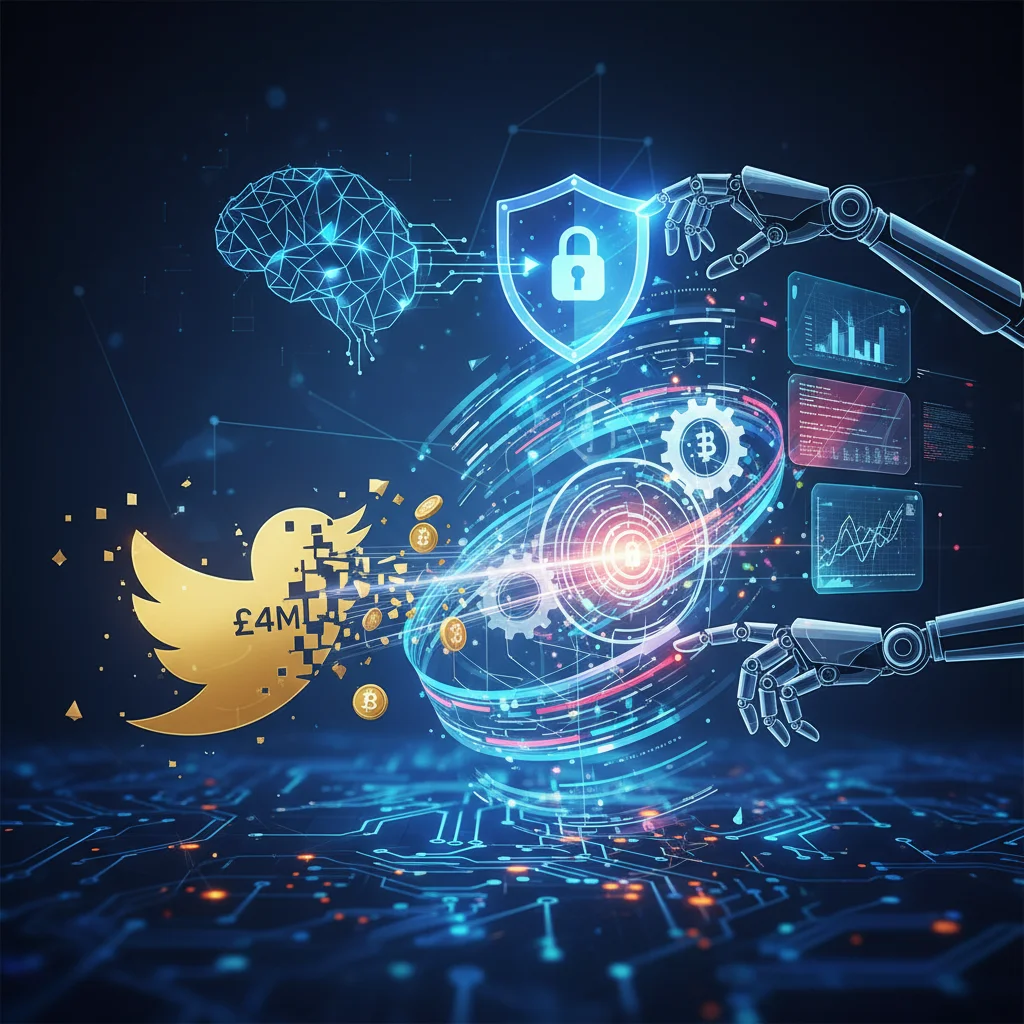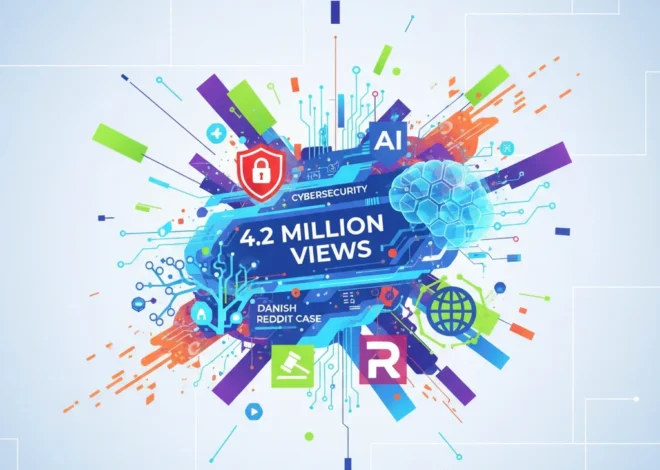
The £4 Million Tweet: Deconstructing the Twitter Hack and the New Era of AI-Driven Cybersecurity
The Price of a Password: How a Young Hacker’s Bitcoin Scam Became a £4 Million Cybersecurity Wake-Up Call
In the world of cybersecurity, headlines often focus on complex code and sophisticated malware. But sometimes, the most devastating breaches hinge on something far simpler: human trust. This was the case in July 2020, when a massive, highly public hack brought Twitter to its knees. Now, years later, the final bill has come due for one of its architects. Joseph O’Connor, a British hacker from Liverpool, has been ordered to repay over £4 million ($5 million) in restitution for his role in hijacking more than 130 high-profile accounts in a brazen Bitcoin scam.
The list of compromised accounts reads like a who’s who of global influence: Barack Obama, Joe Biden, Elon Musk, Bill Gates, Apple, and Uber. For a few chaotic hours, their massive platforms were used to promote a classic crypto-doubling scam, duping followers into sending Bitcoin to a designated wallet. While the financial damage was significant, the real impact was the chilling demonstration of vulnerability at the heart of one of the world’s most important communication platforms.
This wasn’t a story of cracking impenetrable encryption or deploying futuristic AI. It was a masterclass in social engineering—a tale of manipulation, insider access, and the ever-present human element in digital security. As we unpack this landmark case, we’ll explore not just what happened, but why it remains a critical lesson for today’s startups, developers, and tech leaders navigating an increasingly complex landscape of cloud infrastructure, SaaS platforms, and emerging AI-driven threats.
Anatomy of a Social Engineering Masterpiece
To understand the gravity of the 2020 Twitter hack, we have to look past the idea of a lone coder in a dark room. The attack was a coordinated effort that targeted the weakest link in any security chain: people. According to the U.S. Department of Justice, the hackers initiated the breach by targeting a handful of Twitter employees through a vishing (voice phishing) campaign.
Posing as IT support staff, the attackers convinced employees to provide credentials that granted them access to Twitter’s internal administrative tools. This was the holy grail. With this “God Mode” access, they could bypass standard security protocols for any account on the platform. They didn’t need to guess Elon Musk’s password; they could simply reset it from the inside. This highlights a fundamental challenge for any company, especially SaaS providers: securing the powerful internal software used to manage the service itself.
The attackers also allegedly employed a technique known as SIM swapping to compromise employee accounts that were protected by two-factor authentication (2FA). By tricking a mobile carrier into transferring a target’s phone number to a SIM card they controlled, they could intercept the 2FA codes sent via SMS, effectively neutralizing a key security layer. This multi-pronged approach of social engineering and technical manipulation is what made the attack so devastatingly effective.
Beyond the Code: What a Sci-Fi Video Game Teaches Tech About Its Own Dystopian Future
The Human Element: Cybersecurity’s Oldest Vulnerability
The Verizon 2023 Data Breach Investigations Report (DBIR) found that 74% of all breaches involved the human element, which includes everything from simple errors to falling for social engineering scams. The Twitter hack is a textbook example. No amount of sophisticated firewall or intrusion detection software could have stopped an attack that began with a persuasive phone call to a well-meaning but unprepared employee.
This is a sobering lesson for startups and established companies alike. While investing in cutting-edge technology is crucial, neglecting the “human firewall” is a recipe for disaster. Continuous training, clear security protocols, and fostering a culture of healthy skepticism are just as important as any piece of code.
To better understand these threats, let’s break down some common social engineering tactics and how to defend against them.
| Tactic | Description | Defense for Organizations |
|---|---|---|
| Phishing / Vishing | Using deceptive emails, messages, or phone calls to trick individuals into revealing sensitive information. | Regular employee training, email filtering, multi-factor authentication (MFA) using authenticator apps instead of SMS. |
| SIM Swapping | Deceiving a mobile carrier to transfer a victim’s phone number to an attacker-controlled SIM card to intercept calls and texts. | Use non-SMS based 2FA (e.g., Google Authenticator, YubiKey). Encourage employees to set up PINs with their mobile carriers. |
| Pretexting | Creating a fabricated scenario (e.g., posing as a vendor or new employee) to gain trust and access to information or systems. | Implement strict identity verification protocols for all requests for data or system access, regardless of how convincing the story is. |
| Insider Threat | A current or former employee intentionally or unintentionally misuses their authorized access to compromise data or systems. | Enforce the Principle of Least Privilege (PoLP), conduct regular access reviews, and have robust offboarding procedures. |
The AI Arms Race: A Double-Edged Sword in Cybersecurity
While the 2020 hack was driven by classic social engineering, the technological landscape has shifted dramatically since then. The rise of sophisticated artificial intelligence and machine learning has created a new arms race in the world of cybersecurity.
On one side, threat actors are leveraging AI to enhance their attacks. They can use automation to:
- Scale Phishing Campaigns: AI can generate thousands of unique, highly convincing phishing emails, personalized to each target, making them harder to detect by traditional filters.
– Create Deepfakes: Generative AI can clone a CEO’s voice from just a few seconds of audio, enabling incredibly persuasive vishing attacks to authorize fraudulent wire transfers.
– Automate Vulnerability Discovery: AI models can be trained to scan code and networks for exploitable weaknesses far faster than human researchers.
On the other side, defenders are deploying their own AI-powered solutions. Modern cybersecurity platforms use machine learning to analyze billions of data points in real-time to detect anomalies that might signal a breach. An employee suddenly accessing a sensitive tool they’ve never touched before, at an unusual time of day, from an unknown IP address—these are the patterns that AI excels at identifying. This proactive, automated defense is essential for protecting complex cloud environments and sprawling corporate networks.
Actionable Lessons for the Modern Tech Landscape
The O’Connor case and the 2020 Twitter hack are not just historical events; they are living case studies packed with vital lessons for anyone building or running a tech-focused business today.
For Developers and Programming Teams:
The principle of least privilege is paramount. The “God Mode” tool that the hackers accessed should never have been so easily reachable. Secure software development means building systems where no single point of failure—human or technical—can lead to catastrophic compromise. Implement strict access controls, require multiple approvers for critical actions, and log everything. Your internal tools deserve the same security scrutiny as your public-facing product.
For Startups and Entrepreneurs:
Cybersecurity cannot be an afterthought bolted on before your IPO. It must be baked into your culture and your product from day one. This is especially true for SaaS companies whose entire business model is built on trust. Invest in robust security infrastructure, but more importantly, invest in your people. A simple, mandatory, and recurring security training program that covers social engineering is one of the highest-ROI investments you can make.
For Tech Leaders and CISOs:
Your responsibility is to build a resilient organization. This means championing a culture where it’s safe for an employee to say, “This request feels strange, I’m going to verify it,” without fear of reprisal for slowing things down. It means investing in a multi-layered defense strategy that combines cutting-edge AI-driven threat detection with fundamental, human-centric security practices. The ultimate goal is not to build an impenetrable fortress—that’s impossible—but to create an organization that can detect, respond to, and recover from an attack quickly and effectively.
The Final Verdict: A Costly Reminder
Joseph O’Connor’s £4 million restitution order is a powerful statement. It signals a growing commitment from law enforcement globally to pursue cybercriminals and claw back their ill-gotten gains, even when dealing with the complexities of cryptocurrency. It serves as a stark deterrent to would-be hackers, proving that the digital world is not an anonymous playground free from real-world consequences.
Ultimately, the 2020 Twitter hack remains one of the most important cybersecurity stories of our time. It wasn’t about a zero-day exploit or a quantum computing attack. It was about a phone call. It’s a timeless reminder that as our technology—from the cloud to AI—becomes infinitely more complex, our greatest vulnerabilities may remain deceptively simple and profoundly human.


